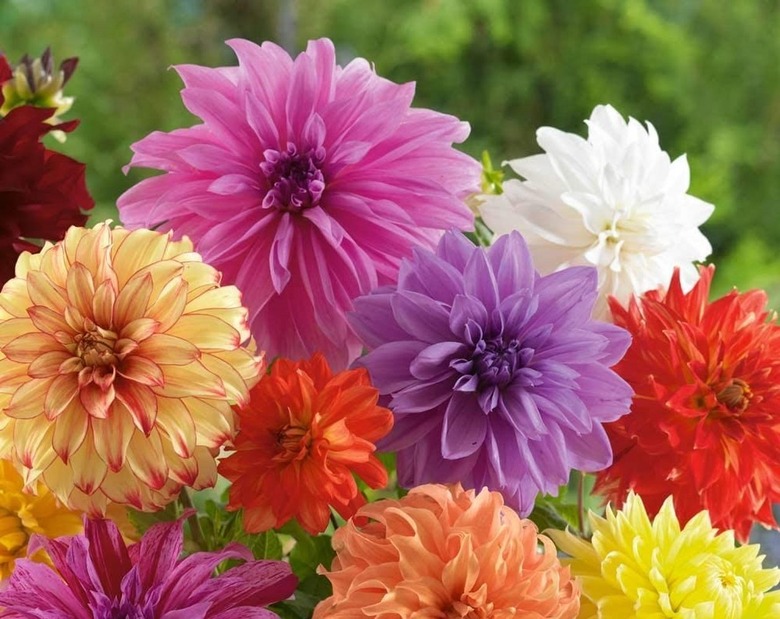What To Do When Dahlias Are Not Blooming
We may receive a commission on purchases made from links.
Dahlias (Dahlia spp.) are tall garden plants with utterly gorgeous flowers in a wide range of colors. That makes it particularly painful when the plants do not bloom. This usually only occurs if the plants are not getting their cultural needs met.
Meet the Dahlia
Meet the Dahlia
Dahlia blooms are all magnificent flowers, but they are not all alike. You can get them in a veritable rainbow of hues and an incredible range of sizes. They can be petite, 1-inch pompom flowers, but that's not all. The flower sizes range up to giant blooms that are 14 inches — the size of dinner plates. Most dahlia plants grow to about 4 to 5 feet tall.
But all this colorful beauty comes at a price. The price for an eye-popping dahlia display in your garden is dedicated cultural care. Most dahlia bulbs require sunshine, irrigation during dry periods, special types of feeding, and deadheading. They also need a particular type of climate. The failure of any of these requirements can result in dahlia buds not opening or in plants simply not blooming.
Plant Dahlias in Your Garden
Plant Dahlias in Your Garden
If you want to grow dahlias in your garden, who could blame you? First, check your climate. Even in the optimal hardiness zones, 8 through 11, these plants prefer moist, moderate climates. They don't do well in extremely hot climates and require sunshine to flower. They also need a fairly long growing season.
What does this mean about blooms? It means that if you've installed your dahlias in a shady area, that will prevent flowering. You can cure this by removing overhanging branches or by transplanting the plants into a section with at least six hours of sunlight a day. Overfertilization encourages healthy growth but discourages flowers.
Care for Your Dahlias
Care for Your Dahlias
Dahlias are fast-growing plants, and they require regular water to thrive and bloom. They are especially vulnerable to low water levels during the flowering period. If you are wondering how often to water, just poke into the soil a little. When it is dry to a depth of 1 inch, it is time. This can translate to twice a week in dry weather during the peak blooming time.
Spread an organic mulch fairly deep (3 or 4 inches) around the dahlia plants to hold moisture into the soil. Take care not to pile it up against the plants' leaves or stems.
Dahlias do best with fertilizer but watch the amount. If you give them too much, you will see weak stems and few to no flowers. They do best with low-nitrogen fertilizer that provides the phosphorus and potassium dahlias need but little or no nitrogen. Nitrogen is great for leafy growth, but that growth comes at the expense of flowers.
Finally, dahlias bloom best if you deadhead faded blooms. Deadheading means removing spent flowers, and this prevents plants from setting seed. When plants set seed, they often stop blooming. Use a pruner to remove dahlia flowers when they wilt. Pinch the stems behind the flower heads and remove whole flowers, not just the petals.
